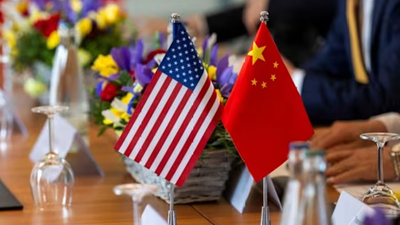ARTICLE AD BOX

China and the United States have taken steps to cool their trade tensions after a meeting between presidents Donald Trump and Xi Jinping in South Korea last week. The move marks a cautious pause in a dispute that has disrupted global trade and technology ties since 2018.Here is where the two sides now stand on key sectors:
Tariffs and trade measures
The trade conflict began when Donald Trump, during his first term, imposed tariffs on Chinese goods, accusing Beijing of intellectual property theft and “unfair” practices. Former President Joe Biden later kept those tariffs in place and expanded them to cover sectors such as semiconductors and electric vehicles.Following last week’s meeting, Trump agreed to cut US tariffs on all Chinese goods by 10 per cent starting November 10 and to approve one-year exemptions for certain products.
In response, China will extend its suspension of an extra 24 per cent tariff on US imports for one year and remove tariffs of up to 15 per cent on various American farm products, reported AFP.However, Beijing will maintain a 10 per cent tariff on all US goods, and average US tariffs on Chinese imports will still sit at about 45 per cent.
Agriculture and Soybeans
China’s retaliatory tariffs had hit US agriculture hard, especially soybean farmers who were a key source of Trump’s political support.
The White House said China agreed to purchase at least 12 million metric tons of US soybeans in the final two months of 2025. Beijing confirmed it will suspend retaliatory tariffs on several American farm goods, including soybeans. It remains uncertain whether US farmers will recover the market share they lost during the conflict.
Fentanyl controls
China is the main source of precursor chemicals used to make fentanyl, a drug linked to a deadly epidemic in the United States.
The 10 per cent tariff reduction is an easing of a 20 per cent fentanyl-related penalty previously imposed by Trump. He said Xi assured him China will “work very hard to stop the flow.”
Rare Earth minerals
The two sides also reached a tentative understanding on rare earths, which are essential for defence, automotive and electronics manufacturing. China dominates the global mining and processing of these minerals.Recent Chinese export restrictions disrupted supply chains and prompted Trump to threaten blanket tariffs of 100 per cent on Chinese goods.After the meeting, the White House said China will issue export licences for rare earths and minerals such as gallium, germanium, antimony and graphite. Efforts by the United States, Japan and Australia to build alternative supplies are expected to take years.
Export controls
Washington will pause for one year a planned expansion of its “Entity List” export restrictions on Chinese firms. However, the United States continues to tighten other curbs on advanced chips and digital technologies. Wendy Cutler of the Asia Society Policy Institute said the meeting results “do little to resolve underlying structural issues that are at the heart of (the) bilateral economic tensions," as quoted by AFP.
TikTok
Both sides said they have agreed on a framework for the transfer of TikTok’s US operations from its Chinese parent company ByteDance.US treasury secretary Scott Bessent said the deal is expected to “go forward in the coming weeks.” China’s commerce ministry said it is willing to “work with the United States to properly resolve” the issue.

 1 hour ago
5
1 hour ago
5









 English (US) ·
English (US) ·